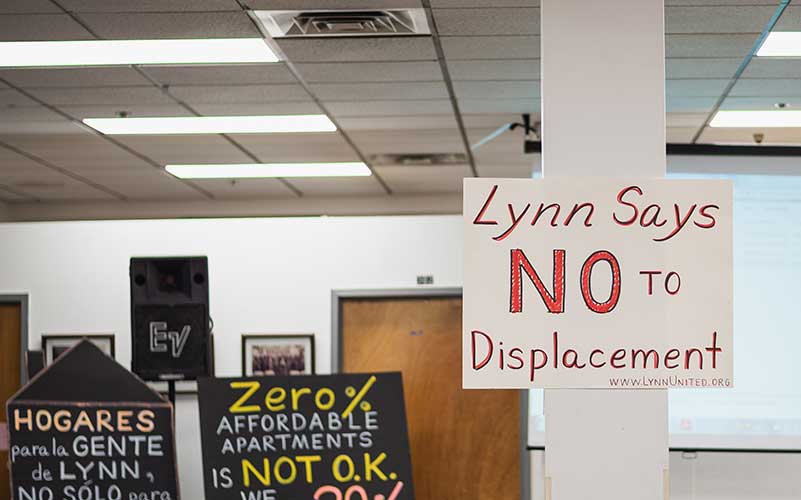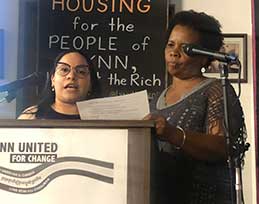
The Healthy Neighborhoods Study revealed that nearly 40% of Lynn residents expect to move out of Lynn in the next five years because it's no longer an affordable place to live.
When Celinet Sanchez and her family moved to Lynn four years ago, they rented a place that, from the advertisement, seemed perfect: A clean, affordable one-bedroom apartment within walking distance to work.
Within weeks of moving in, however, Celinet and her husband realized that the Washington Street apartment was far from perfect. The 96-unit building crawled with rats, roaches, and mold. Trash festered in its hallways. And more than once, they found someone overdosing in front of their apartment door. Her daughter started having nightmares about zombies. Their home felt dangerous and unhealthy.
Yet, Celinet says, “I never thought from that horrible situation I could learn so much about how to advocate for so many people.”
Searching for a way out of their terrible living conditions, Celinet connected with Lynn United for Change, one of CLF’s partners in the Healthy Neighborhoods Study. Through them, Celinet learned how to organize her neighbors so they could raise awareness about their rights as tenants and document the problems in their building. Their struggles as renters in a neglected property are now playing out in the courtroom. Celinet and her husband are acting as leading plaintiffs for a class action lawsuit against the landlord. Here, organizing offered a way to try to force their landlord to make the much-needed improvements to their apartment.
Organizing and Participatory Action Research
As a Resident Researcher for the Healthy Neighborhoods Study, Celinet sees CLF’s groundbreaking Participatory Action Research Project as a “macro-level” version of the organizing she did with her fellow tenants. Just as she went door-to-door surveying neighbors to understand the extent of the problem in her building, she sees the Healthy Neighborhoods Study filling a similar information gap community-wide. She and her fellow resident researchers get “to talk to people in the community who might be in the same situation my family went through,” she says. “We get all this data about insecurity and affordability. Surveys are a way for us to gather the proof we need to convince city officials: We have a housing crisis.”
From Research to Action

In June 2019, Lynn United for Change hosted a community meeting around affordable housing for residents, policymakers, and other stakeholders. More than 75 people attended the session, where Celinet and Goldean Graham, another resident researcher on the Healthy Neighborhoods Study, shared the results of the research with their community.
The goal of their presentation was to expose people to data from the Healthy Neighborhoods Study. Through their organizing, they had learned that the people struggling with housing instability in Lynn feel that it is their problem alone. Through the Healthy Neighborhoods Study, Celinet and Goldean were able to show that just the opposite is true: many people across the city are experiencing similar struggles.
One statistic stood out in particular: 38% of the residents surveyed expect to move out of Lynn in the next five years because they will no longer be able to afford to live there. The audience listened attentively, responding positively to the findings Celinet and Goldean presented. Ultimately, this shared understanding of these struggles will help Lynn residents come together and fight for healthy housing.
Unhealthy Housing Across the Commonwealth
Although Lynn residents feel these challenges, they are not unique to Lynn. Each of the nine communities partnering with CLF on the Healthy Neighborhoods Study is experiencing the ill effects of gentrification and housing instability. And each of the community-based organizations driving the research is taking action to lift up the work of our resident researchers and empower their neighbors to understand and stop these harms.
Celinet and her family were able to move out of their horrid apartment after 18 months. The legal case against their landlord continues, however, so that other families in Lynn and beyond never get caught in such an unhealthy situation themselves. The community-wide research that Celinet and her fellow organizers from Lynn United for Change collected will continue, as well – a valuable tool for ensuring that residents have the information they need to bring the kinds of neighborhood changes they want to see.
This blog is one in a series about how our resident researchers are turning research into action. Read the entire series here.



